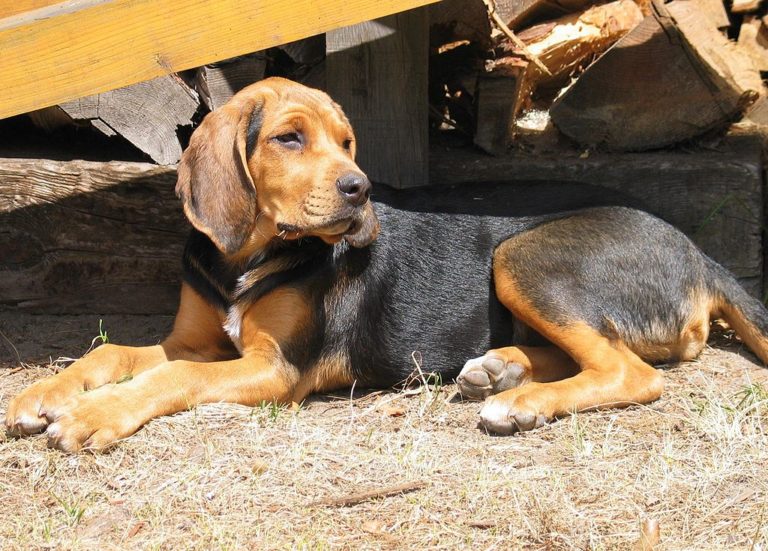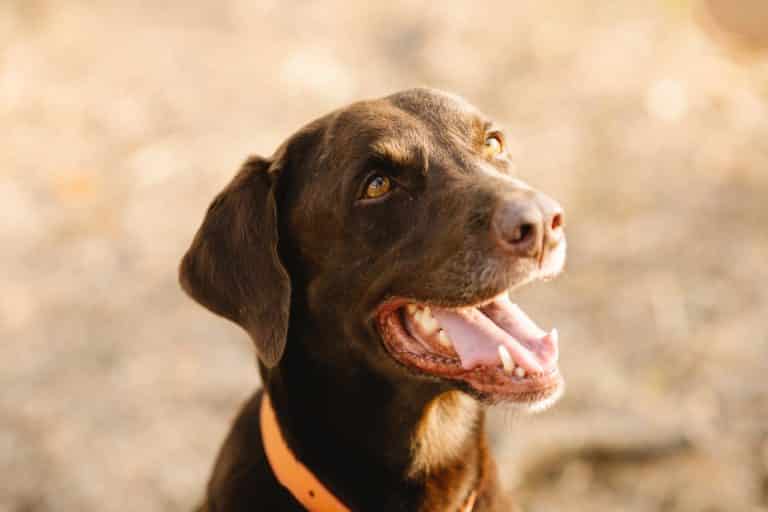Polish Lowland Sheepdog / Polski Owczarek Nizinny
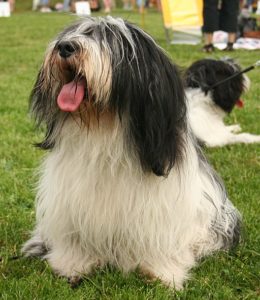
Image by Pleple2000 CC BY-SA 3.0 via Wikimedia Commons
Different Names | The Polish Lowland Sheepdog is also known by its Polish name of Polski Owczarek Nizinny, or PON for short. |
Physical Appearance | It is a medium sized dog standing up to 20 inches/50 cm and weighing up to 50 pounds/23 kgs. This breed has a shaggy double coat in different colours. Polish Lowland Sheepdogs range from beige, black, chocolate and grey to white. |
History of Breed | Originally used as a working or herding dog for sheep. They’ve existed since the 13th century in Poland, and were brought back from near extinction in the 1950s. |
Temperament | They are confident dogs and are loving and affectionate to family members. However, they may be wary of strangers. |
Breed Care | Due to their energetic personality and shaggy coat, they do require significant attention and grooming. They also need training from an early age. They may be suitable for apartments as they are not a large dog. They are full of energy and need lots of exercise. |
Polish Hound / Ogar Polski
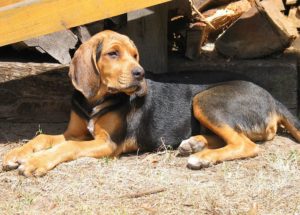
Different Names | The Polish Hound is also known by its Polish name of Ogar Polski. |
Physical Appearance | It is a large sized dog standing up to 24 inches/60 cm and weighing up to 63 pounds/28 kgs. This breed has a short but thick double coat. Polish Hounds can be either, or a combination of, black, red and tan. |
History of Breed | Originally used as hunting dogs, they have a keen sense of smell and are full of energy. They descended from cross breeding of local Polish hounds with imported bloodhounds from at least the 18th century. |
Temperament | As a companion, they are generally calm, friendly and affectionate – thus making good family dogs. |
Breed Care | They are low maintenance in terms of grooming but do need lots of exercise and walks. Because of their intelligence they are also easy to train. |
Polish Hunting Dog / Gończy Polski

Different Names | The Polish Hunting Dog is also known by its Polish name of Gończy Polski. |
Physical Appearance | It is a large sized dog standing up to 26 inches/66 cm and weighing up to 70 pounds/32 kgs. This breed has a short, smooth double coat. Polish Hounds can be either, or a combination of, black and tan. |
History of Breed | Originally used as hunting dogs who could track down prey with their keen sense of smell. This breed has existed since at least the 13th century in Poland. |
Temperament | As a companion, they are generally brave, gentle and affectionate. They are good around a family but may be slightly wary of strangers. |
Breed Care | They are low maintenance in terms of grooming but do need plenty of exercise and walks as they are full of energy. Because of their intelligence they are also easy to train. It’s best to socialise Polish Hunting Dogs from an early age. |
Polish Tatra Sheepdog / Owczarek Podhalanski / Tatra Shepherd Dog
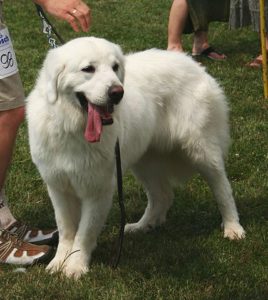
Image by Pleple2000 CC BY-SA 3.0 via Wikimedia Commons
Different Names | The Polish Tatra Sheepdog is sometimes called the Tatra Shepherd Dog, and is also known by its Polish name of Owczarek Podhalanski. |
Physical Appearance | It is a large sized dog standing up to 28 inches/70 cm and weighing up to 130 pounds/59 kgs. This breed has a long white coat. Polish Tatra Sheepdogs can be either cream or white in colour. |
History of Breed | Originally used as herding dogs for sheep, they need a moderate level of exercise. Because of their territorial nature, they were also used as guard dogs for livestock in the past. |
Temperament | As a companion, they are generally calm, gentle and independent. |
Breed Care | They are low maintenance in terms of grooming due to their low shedding, glossy coats. But they do need enough exercise and walks. Training is recommended and some say that this breed is suited to experienced owners. |
Polish Greyhound / Chart Polski
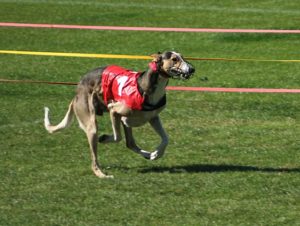
Image by Przykuta CC BY-SA 3.0 via Wikimedia Commons
Different Names | The Polish Greyhound is also known by its Polish name of Chart Polski. |
Physical Appearance | It is a large sized dog standing up to 30 inches/76 cm and weighing up to 70 pounds/31 kgs. This breed has a short, smooth double coat. Polish Greyhounds can be either blue, beige or black and tan. They are lean and muscular in appearance. |
History of Breed | This is a breed of hunting dog that hunts by sight and speed rather than smell. Thought to have originated from the 12th or 13th centuries, and cared for by Polish nobility at one stage. |
Temperament | As a companion, they are generally protective and loyal, and not so welcoming of other dogs. True to their heritage, they have a strong instinct to hunt prey, so may chase and attack smaller animals. |
Breed Care | They are full of energy and need lots of exercise. They are low maintenance in terms of grooming but do need regular exercise and walks. Owners should be wary of keeping Polish Greyhounds with other pets. |
Polish Hunting Spaniel / Polski Spaniel Myśliwski
Different Names | The Polish Hunting Spaniel is also known by its Polish name of Polski Spaniel Myśliwski. |
Physical Appearance | It is a medium sized dog standing up to 19 inches/48 cm and weighing up to 57 pounds/26 kgs. This breed has a medium length, somewhat shaggy coat. Polish Hunting Spaniels are usually chocolate roan in colour with patches of different shades. They have long droopy ears like the typical spaniel. |
History of Breed | This is a relatively new breed of hunting dog that is used to flush out small birds and game as well as retrieving downed prey. There are not many specimens worldwide. |
Temperament | As a companion, they are intelligent and affectionate and make good pets. |
Breed Care | Polish Hunting Spaniels are easy to train and exhibit good self-control. They are full of energy and need exercise. |
Pomeranian

Different Names | The Pomeranian is also known as a Pom. |
Physical Appearance | It is a small sized dog standing up to 12 inches/30 cm and weighing up to 7 pounds/3 kgs. This breed has a thick fluffy coat in different colours. Pomeranians come in a variety of colours, including white, red and orange among others. They have short ears and a distinctive teddy bear like face. |
History of Breed | This breed is actually of Polish and German origin. They are very popular dogs worldwide. It’s been said that the Pomeranian is a descendant of the German Spitz type dog, and that the Pomeranian breed was named after the Pomerania historical area in Poland. |
Temperament | This breed is lively and playful, however can get aggressive at times to other humans and dogs. Pomeranians may bark at unknown noises, humans and other animals. |
Breed Care | Due to their coats they do require moderate grooming. They are suitable for apartments and smaller houses due to their diminutive size, however still need enough exercise as with many dogs. |

